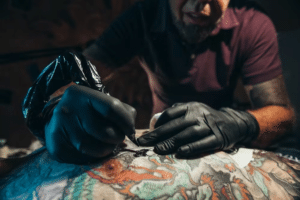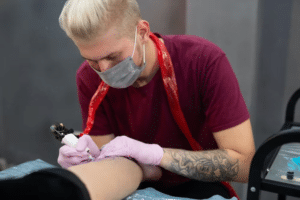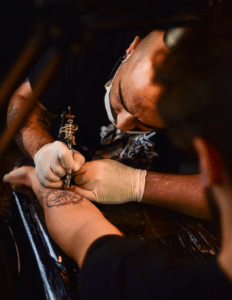Unveiling London’s Tattoo Tapestry: A Journey Through Time and Ink
London, with its rich tapestry of history and culture, is not just a hub for the arts but also a thriving centre for the evolution of tattooing. Surprisingly, recent statistics reveal that more than 20% of Brits are inked, and in London alone, the number of tattoo parlours has skyrocketed over the last decade.
This article aims to delve into the fascinating evolution of tattooing in London, charting its course from a niche practice to a mainstream phenomenon through a curated timeline of ten pivotal moments. As we embark on this journey, we’ll uncover the stories, styles, and significant shifts that have shaped the London tattoo scene into the vibrant tapestry it is today.
So, whether you’re a tattoo enthusiast or simply curious about this art form’s rich history in the capital, join us as we explore the top 10 tattoo moments in the evolution of tattooing in London.
1. Early Beginnings (Pre-20th Century)
The journey of tattooing in London predates the 20th century, beginning in the late 1800s. Initially, tattoos were a rarity, exclusive to sailors, soldiers, and adventurers who brought this art form from distant lands. London’s docks served as gateways for these tattooed individuals, making the city a burgeoning hub for this unique form of expression.
High Society’s Fascination
By the early 1900s, the intrigue of tattooing had permeated the upper echelons of society. Influential figures, including royals and aristocrats, began embracing tattoos, not just as body art but as symbols of prestige and worldliness. This era saw tattoo artists gaining recognition, with some even receiving royal patronage, marking a pivotal moment in the acceptance and evolution of tattooing in London’s social tapestry.
2. 1920s-1930s: The Interwar Period
Tattooing’s Transformation in London
During the interwar years, London witnessed a transformative period for tattooing, evolving from a symbol of elite status to a broader cultural expression. The 1920s introduced tattooing to the working class, who embraced it as a form of individuality and defiance. Tattoo parlours, previously exclusive to affluent areas, began appearing in more accessible locations, democratizing the art form.
A Diverse Canvas
The 1930s saw an increase in the diversity of tattoo enthusiasts, including women who started to break societal norms by adorning themselves with ink. This era also marked the beginning of tattoo gatherings in London, where enthusiasts shared designs and techniques. Despite societal prejudices, tattooing flourished as a form of self-expression, laying the groundwork for its post-war resurgence and the eventual mainstream acceptance that would follow.
3. 1950s: Post-War Influence
London’s Tattoo Renaissance
The 1950s heralded a renaissance in London’s tattoo culture, deeply influenced by the aftermath of World War II. Returning servicemen, adorned with tattoos from across the globe, injected new life and diversity into the local tattoo scene. These living canvases showcased intricate designs and techniques previously unseen in the city, sparking a renewed interest in tattooing among Londoners.
The Emergence of Iconic Studios
This era also saw the establishment of iconic tattoo studios in London, which became focal points for innovation and artistic exchange. Artists began experimenting with new styles and pigments, leading to an enhancement in the quality and variety of tattoos. The 1950s set the stage for tattooing to evolve from a form of wartime commemoration to a means of personal expression, solidifying its place in London’s cultural landscape.
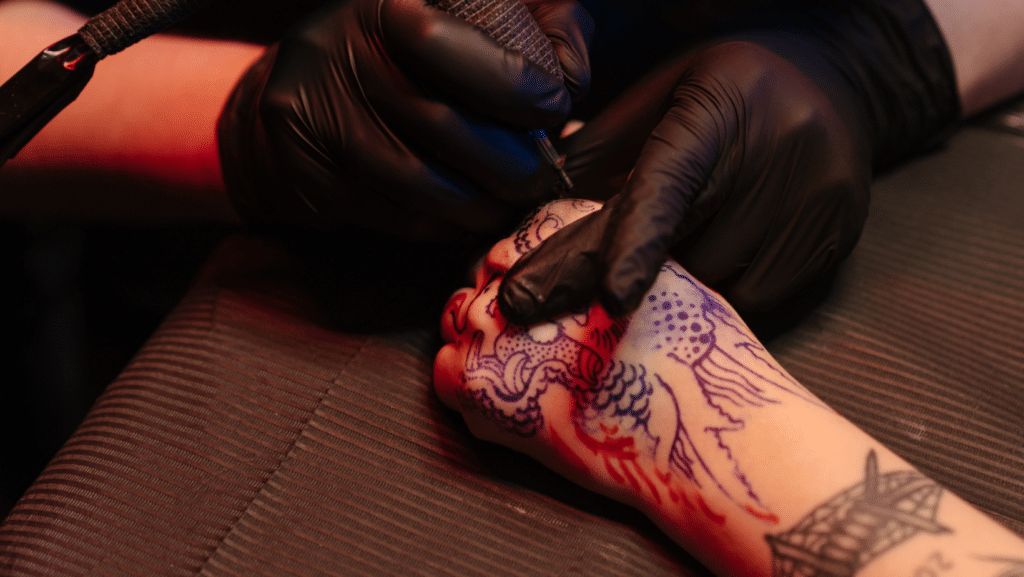
4. 1960s-1970s: The Counterculture Era
A Revolution in Ink
The 1960s and 1970s in London were defined by a powerful wave of counterculture, deeply impacting the city’s tattoo scene. As societal norms and values underwent dramatic shifts, tattoos became a prominent symbol of rebellion, individuality, and non-conformity. Young people, artists, and musicians led the charge, using their bodies as canvases to display their ideologies and affiliations.
Expanding Horizons
This period also witnessed an expansion in the stylistic and thematic range of tattoos. Influences from Eastern cultures, psychedelic art, and the burgeoning punk scene introduced Londoners to a kaleidoscope of new designs. Tattoo parlours multiplied, becoming hubs of creativity and resistance. As the taboo surrounding tattoos began to fade, the art form entrenched itself not just as a trend but as an indelible part of London’s cultural identity.
5. 1980s: Punk Rock and Tattoo Fusion
Ink Meets Anarchy
The 1980s in London marked an iconic fusion of punk rock and tattoo culture, propelling tattoos into unprecedented realms of expression. As punk music echoed through the streets, challenging societal norms, tattoos became an integral part of this rebellion. London’s youth, inspired by punk icons, embraced tattoos as symbols of resistance, autonomy, and belonging to a counter-cultural movement.
Evolution of a Subculture
This decade witnessed a significant evolution in tattoo aesthetics, with bold, striking designs that mirrored the punk ethos of defiance and non-conformity. Blackwork, simplistic motifs, and band logos became increasingly popular, reflecting the gritty, raw energy of the punk scene. Tattoo parlours, once on the fringes of society, emerged as crucibles of artistic innovation, drawing a diverse clientele eager to ink their identities and allegiances. The 1980s solidified the bond between punk music and tattooing, forever changing London’s cultural landscape.
6. 1990s: Mainstream Acceptance Begins
Tattooing’s Cultural Shift
The 1990s marked a significant turning point for tattooing in London, transitioning from a symbol of subculture to mainstream acceptance. This era saw tattoos permeating various layers of society, transcending previous boundaries of class, age, and profession. Influenced by celebrities and media, tattoos gained popularity as a form of personal expression and artistry.
The Rise of Customisation
During this period, the demand for custom, unique tattoos surged, highlighting individuality and the wearer’s personal story. Tattoo studios flourished, offering a wider range of styles and techniques, from intricate tribal designs to delicate watercolour works. The establishment of tattoo conventions and exhibitions in London further legitimised the craft, providing platforms for artists to showcase their work and for the public to engage with the art form. The 1990s laid the foundation for tattoos’ acceptance in mainstream culture, setting the stage for the diverse and inclusive tattoo community of today.
7. 2000s: Technological Advances and Artistic Evolution
The Digital Revolution in Tattooing
The 2000s marked a period of significant technological advancement and artistic evolution within London’s tattoo scene. Innovations in tattoo equipment, such as more precise needle machines and a broader palette of ink colours, allowed artists to achieve greater detail and complexity in their designs. This era ushered in digital design tools, enabling the creation of highly customised and intricate artwork that could be precisely replicated on the skin.
A Global Melting Pot
As the internet facilitated the exchange of ideas across borders, London’s tattoo culture became a melting pot of global influences. Artists and enthusiasts drew inspiration from a vast array of styles, from traditional Japanese Irezumi to Polynesian tribal patterns, enriching the diversity of the local scene. This period also saw tattoos increasingly being recognised as a legitimate form of fine art, with exhibitions in galleries and collaborations between tattooists and contemporary artists, further elevating the craft’s status in the art world.
8. 2010s: The Age of Social Media
Tattooing in the Digital Spotlight
The 2010s represented a transformative era for London’s tattoo scene, primarily driven by the explosive growth of social media. Platforms like Instagram became digital galleries for tattoo artists, showcasing their work to a global audience. This visibility not only democratised tattoo art but also accelerated its acceptance and appreciation across diverse communities.
A New Era of Engagement
Social media not only amplified artists’ profiles but also fostered a more interactive relationship between artists and clients. Potential customers could now easily explore an artist’s portfolio, book appointments, and engage in design discussions online, streamlining the process. Furthermore, social media trends influenced tattoo designs, with viral images and themes quickly translating into popular tattoo requests. This digital convergence marked a pivotal shift in how tattoo culture was consumed and perceived, firmly establishing tattoos in the mainstream and encouraging a continuous evolution of styles and techniques.

9. 2020s: Current Trends and Innovations
Embracing Sustainability and Personalisation
The 2020s have heralded a new chapter in London’s tattoo culture, characterised by a strong emphasis on sustainability, personalisation, and mental health awareness. Eco-friendly practices, such as the use of vegan inks and biodegradable supplies, reflect a growing environmental consciousness within the community. Additionally, there’s a shift towards more personal, meaningful designs that tell unique stories or symbolise personal growth and recovery.
Technological Integration and Artistic Diversity
Technological advancements continue to shape the industry, with augmented reality (AR) apps allowing individuals to preview designs on their skin before committing. The rise of AI in design processes also offers unprecedented customisation options, enhancing the collaboration between artist and client. Artistic styles have become increasingly diverse, with fine line, abstract, and mixed media tattoos gaining popularity. These trends not only reflect the evolving aesthetics of London’s tattoo scene but also its deeper integration with technology, sustainability, and personal expression.
10. The Future of Tattooing in London
Innovations and Expanding Horizons
The future of tattooing in London is poised for unprecedented innovation and cultural integration. Advances in ink technology promise to introduce safer, more durable pigments, while augmented reality (AR) and virtual reality (VR) will offer immersive design experiences, allowing clients to explore and customise tattoos in ways previously unimaginable.
Ethical Practices and Global Influence
Sustainability will continue to be a pivotal focus, with eco-friendly studios and ethical practices becoming the norm. London’s tattoo scene will likely be at the forefront of this movement, setting global standards for environmental responsibility in the industry.
A Canvas for Social Change
As tattooing becomes increasingly embedded in social and therapeutic realms, it will offer new avenues for storytelling and personal healing, reflecting broader societal shifts. Collaborations across art forms and digital platforms will blur the lines between traditional tattooing and other creative expressions, making London’s tattoo culture a dynamic, evolving tapestry of art, technology, and social consciousness.
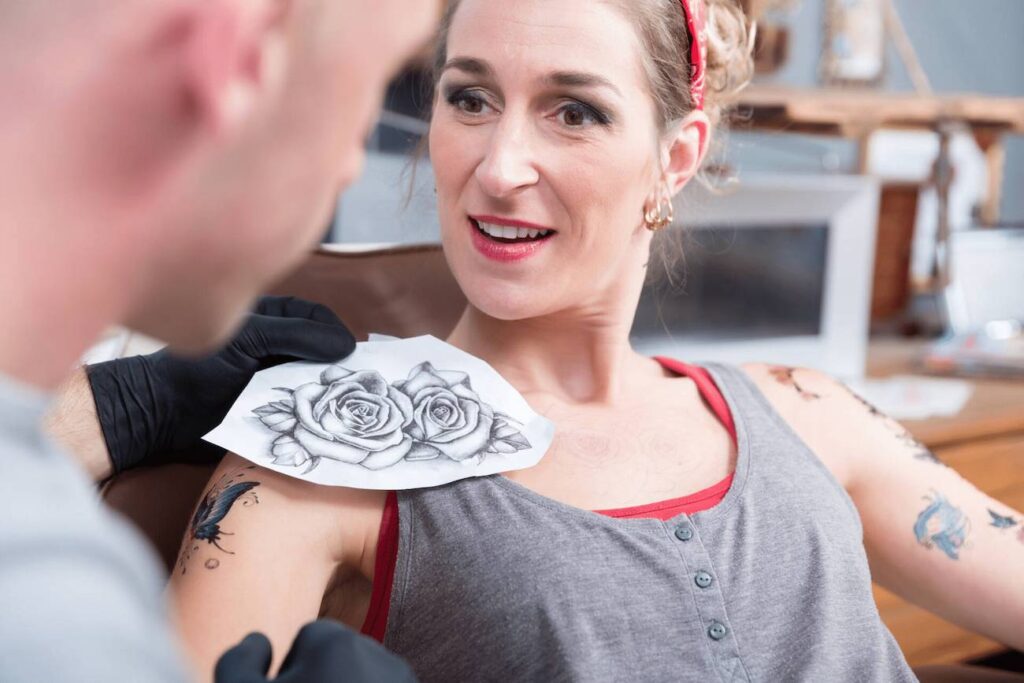
Embracing the Future: London’s Tattoo Renaissance with Pearl Lemon Tattoos
The future of tattooing in London promises a blend of tradition and innovation, as the city continues to be a beacon for artistic expression and cultural exchange. With advancements in technology, a commitment to sustainability, and a focus on inclusivity, London’s tattoo scene is set to flourish, offering new and exciting possibilities for both artists and clients.
As we envisage this future, it’s clear that tattoos will remain an integral part of London’s cultural fabric, evolving with the times while continuing to celebrate the rich history and diversity of the art form.
For those inspired by the journey of tattooing in London and looking to explore their own ink aspirations, Pearl Lemon Tattoos stands at the forefront of this evolving industry. With expert artists and a commitment to creativity, quality, and client care, Pearl Lemon Tattoos invites you to embark on a tattooing experience that’s as unique as your personal story.
Contact us to discover how we can bring your vision to life in the ever-changing landscape of London’s tattoo artistry.


